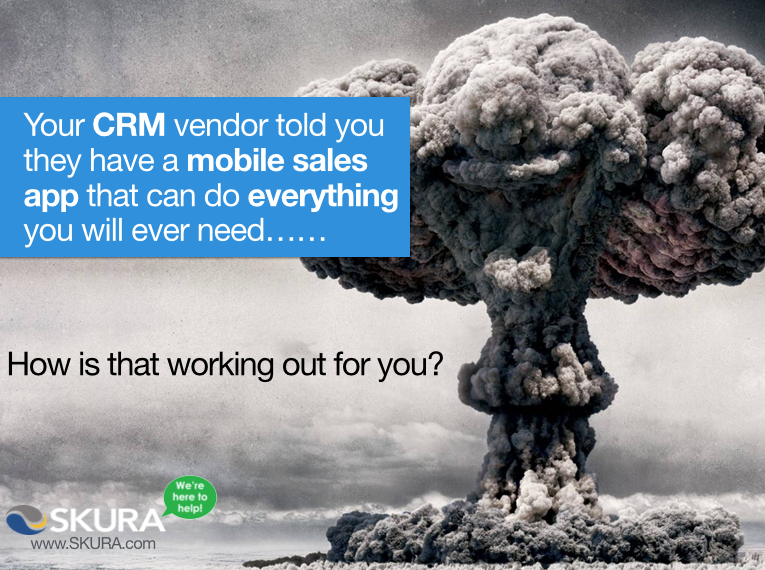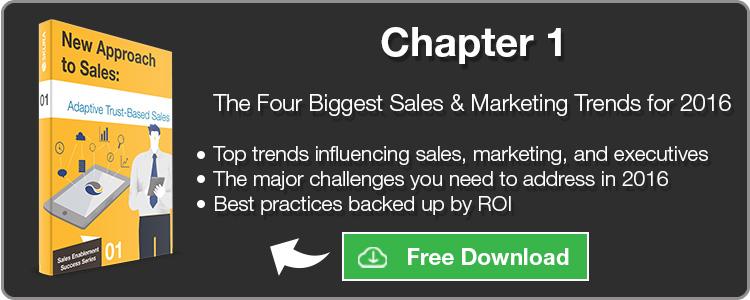So you’ve secured a business. You’ve gotten that client to finally say "Yes, I am ready to buy". How exhilarated must you feel? All your hard work paid off. But before you close-off the sales process and spend your commission, remember that the sale only consummates the relationship, and the buyer’s relationship hasn't come close to ending. Are you stuck thinking; what now? Your CRM system holds the answer.
If you’re reading this and thinking “My CRM system won’t tell me that”, then not only is your CRM system being underutilized, your company is at risk of being a laggard of CRM integration.
The Stages of Customer Interactions
As a sales rep, you represent the link between the vendor company and the buyer. Though a corporate relationship exists, the sales rep is the facilitator and maintainer of the relationship fabric.
There are only three conceptual stages of buyer interaction, and a best in class sales rep knows how to navigate all three for maximized success in developing profitable relationships.
Acquisition, Retention, Win-Back
Acquisition is the first stage of interaction. This is everything that happens prior to the sale of the product or service. It doesn’t matter how many customer’s you have, your firm should always be participating in acquisition strategies, because anywhere from 20% to 40% of a company’s customers are lost each year. (Source: Taylor & Francis, 2013)
Customers can be acquired in any number of ways, and the majority of them are fed to the sales funnel by marketing teams in the form of MQLs.
The most effective B2B acquisition strategies stem from effective sales and marketing alignment. This kind of business practice results in marketing teams including sales when creating customer facing content. Sales teams know what the buyer wants to see, and facilitate the effective creation of enticing content.
Marketing facilitates the role of sales content management and development, and reps use this content to add value to a conversation, and remain relevant over time while nurturing a lead.
Retention is the set of processes conducted by a sales team after the sale has been made. The sales process doesn’t just end when you leave the room from your closing sales presentation. Reps must continue to invest in the relationship for the benefit of future sales potential.
Clearly retention will work better in some industries than others, especially if those industries have historically high retention statistics, and buyers have a steep skew, meaning there is a lot of variability of value between one customer and another.
As a general rule, over time, if a company increases retention by 5%, profitability can increase by as much as 85% in some cases.
Retaining customers in B2B can start as early as the sale, with an agreement that lengthens the term of the relationship. It could be some kind of preferential treatment, typically given to key accounts of any particular business. Generally however, sales reps play a major role in retaining the relationship of a B2B interaction.
Sales reps continue to add value to the relationship by offering their expertise, consultation, and even content that delights the buyer and encourages them to continue the relationship.
The benefit of retained customers is immense, forgetting about the 5% stat from above, retained customers are opportunities for cross-selling, up-selling, and referrals. There is a 60% to 70% likelihood of successfully repeat selling to an existing, active customer.
Win-Back is all about mending the relationship and trying to rekindle the value that once formed the foundation of the relationship. Everything that happens after the buyer-seller relationship has ended, can be considered win-back.
Rekindling the value is a wide net under which a number of strategies exist. The value can be redefined through research and data-mining, or, a lower price, and/or, higher value offering can be made under the same defined value as before.
Whether price for value is changed, or a brand new value proposition is established, most companies have a 20%-40% chance of repeat selling to a once lost customer, as compared to only a 15%-20% chance of closing for a brand new customer.
Keeping Relevant
Whether you’re acquiring new customer’s, retaining existing customers, or just taking a shot at some old faces, the underlying strategy is being relevant. Regardless of who the buyer is, and where, if you can maintain relevance, you can be successful.
Relevance through the CRM System
Perhaps the most powerful revenue generating tool in any corporation today is their CRM system. A majority of companies have some form of CRM program.
Oftentimes CRM is overlooked when considering acquisition, in other cases, CRM systems are seen as nothing but a glorified Rolodex program for the Customer Service department.
- 43% of CRM users feel that less than half of their system is used effectively
- 35% enter information manually
- 72% would trade in their system for something easier and more useful (Source: Salesloft)
These stats are concerning because a CRM system is a highly adaptable piece of software which should not only provide lagging indicators of sales progress, but leading indicators and predictive analytics for future lead nurturing and buyer decision journey mapping.
… Did that last bit there sound nothing like your CRM system, and everything like what you wish you had? You’re not alone.
Getting More out of CRM
The CRM system keeps exceptional data about customers, and rightfully so. The issue is when it doesn’t get adequate usage. As cleared-up above, the CRM system needs two major engagements:
- Exceptionally comprehensive, automatically updating of buyer behaviour and other insights
- Effective and accurate leading indicators and predictive analytics
It isn’t enough (unless you’re customer service) to have a digital phone book with a list of the last time they called the business. CRM has the potential to leverage comprehensive forward visibility and sales enablement.

CRM is CRM
So you have CRM, you see that it could be better, and it’s clear that best-in-class Fortune-level players are already there (otherwise we wouldn’t be so sure about CRM integration).
Why not just pressure your CRM provider to enable this kind of buyer decision journey conversational development?
The simple reason is that it just won’t happen. CRM is just CRM, it is a receiver of information, and a warehouse organizer of data, not a sales enablement program. CRM can leverage greater sales enablement in much the same way that a bank can leverage great stock investments, but they need an investment firm (or division).
The tool needed to maximize the value of CRM through sales knowledge is known as adaptive sales enablement.
CRM for Sales Enablement
As explained above, up to 2/3 of best in class companies intend to, or already have extensive CRM integration with their customer facing sales reps. These companies have full unwavering mobile access to the program, and the program automatically updates anytime.
Sales enabled CRM is composed of two major facilitating connections, one is known as closed loop marketing, and the other is integrated content management.
Closed Loop Marketing is a set of two types of content consumption tracking made possible through sales analytics software that “closes the loop” in content development, and informs the CRM system.
Essentially, instead of sales content being unknowingly consumed by reps and customers, the consumption is tallied and tied to the contact details in the CRM system. Marketing and Sales teams know what that buyer found interesting, and create strategies for the future based off their actual behaviour with content.
Over time, similarities in content consumption can be turned into buyer personas, and content can be tied to decision journeys experienced by those customers in the CRM system. Every company is different, meaning every company will need to develop their own, and it starts with closed loop marketing.
Integrated Content Management is how you can make use of the predictive insights you compile while closing the information loop. Over time, buyers can be categorized into personas, and content can be made specifically for those personas.
These insights enable effective sales content management. Marketing teams create sales playbooks for every persona, and the sales process becomes a tried and true program of delivering the right content to the right people at the right time.
Long Term Effects of CRM Integration
The long term impact of this kind of sales rep software integrated with the CRM system is more sales and marketing alignment. Why?
Marketing teams begin to see how and why particular content is and is not effective, they learn what really helps sales teams succeed. Sales reps are more empowered to provide marketing teams feedback on their content, as they have proof of consumption.
Companies with well integrated CRM systems see:
- 11% greater percentage of quotes turning into orders
- 24% greater percentage of reps achieving their sales quotas
- 5% increase in customer renewal rate (Source: Aberdeen)
The majority of companies are implementing CRM, yet less than 1 in 5 have mobile access, and fewer than 1 in 7 have any touch point integration and content consumption insights. The opportunity still exists for many firms to lead the pack in their industry.
Is your firm failing to integrate the CRM system? Is valuable knowledge simply walking out the door after every sales interaction? You might be missing out on a real sales enablement solution.












